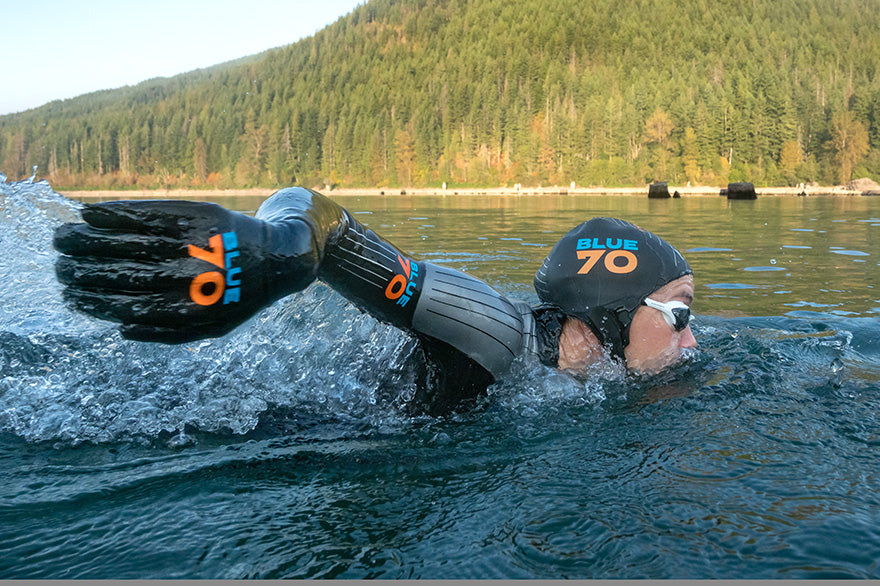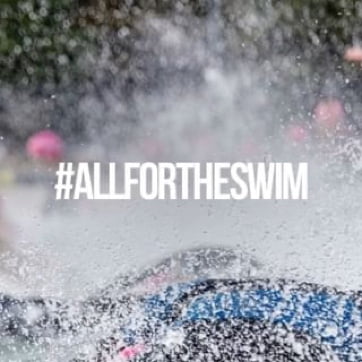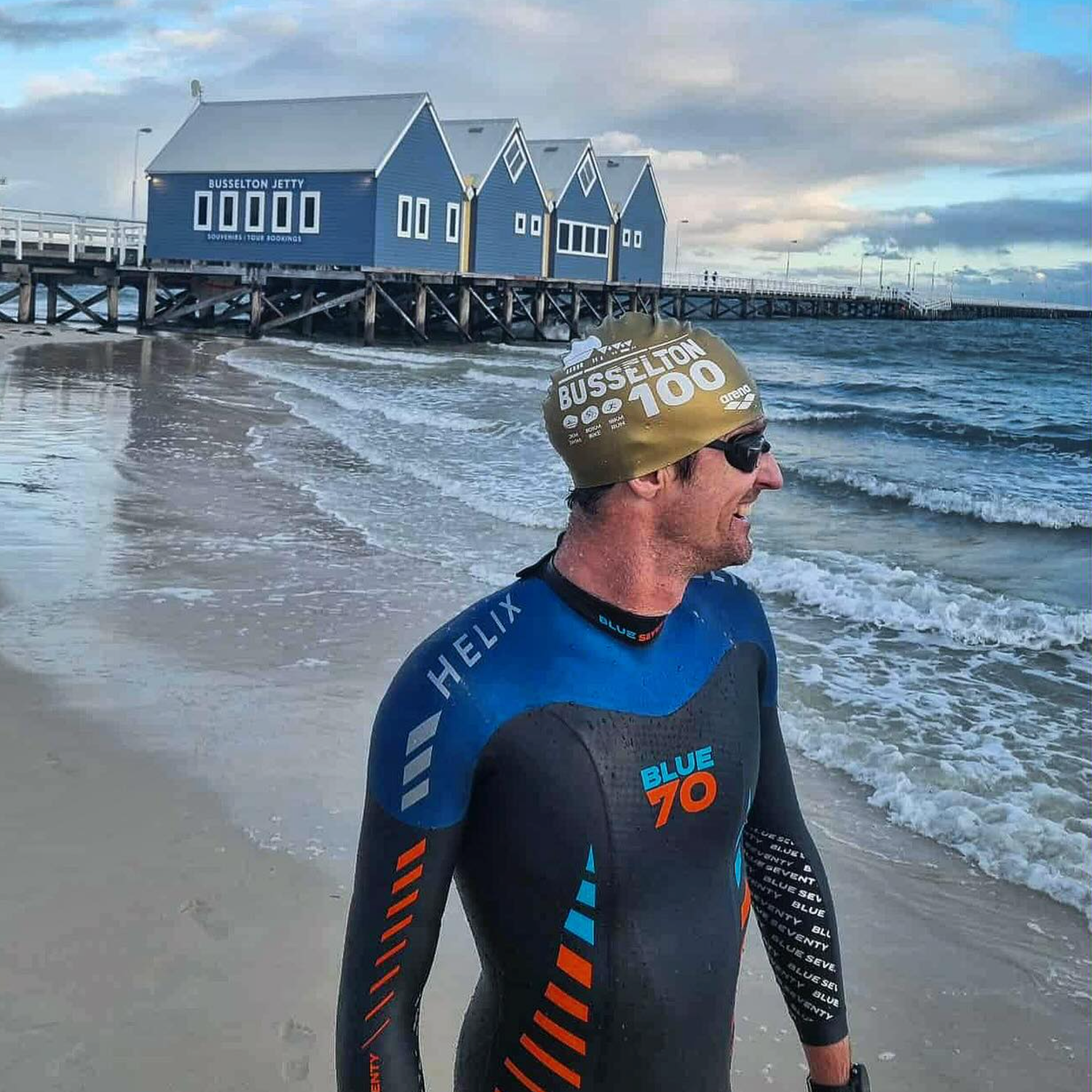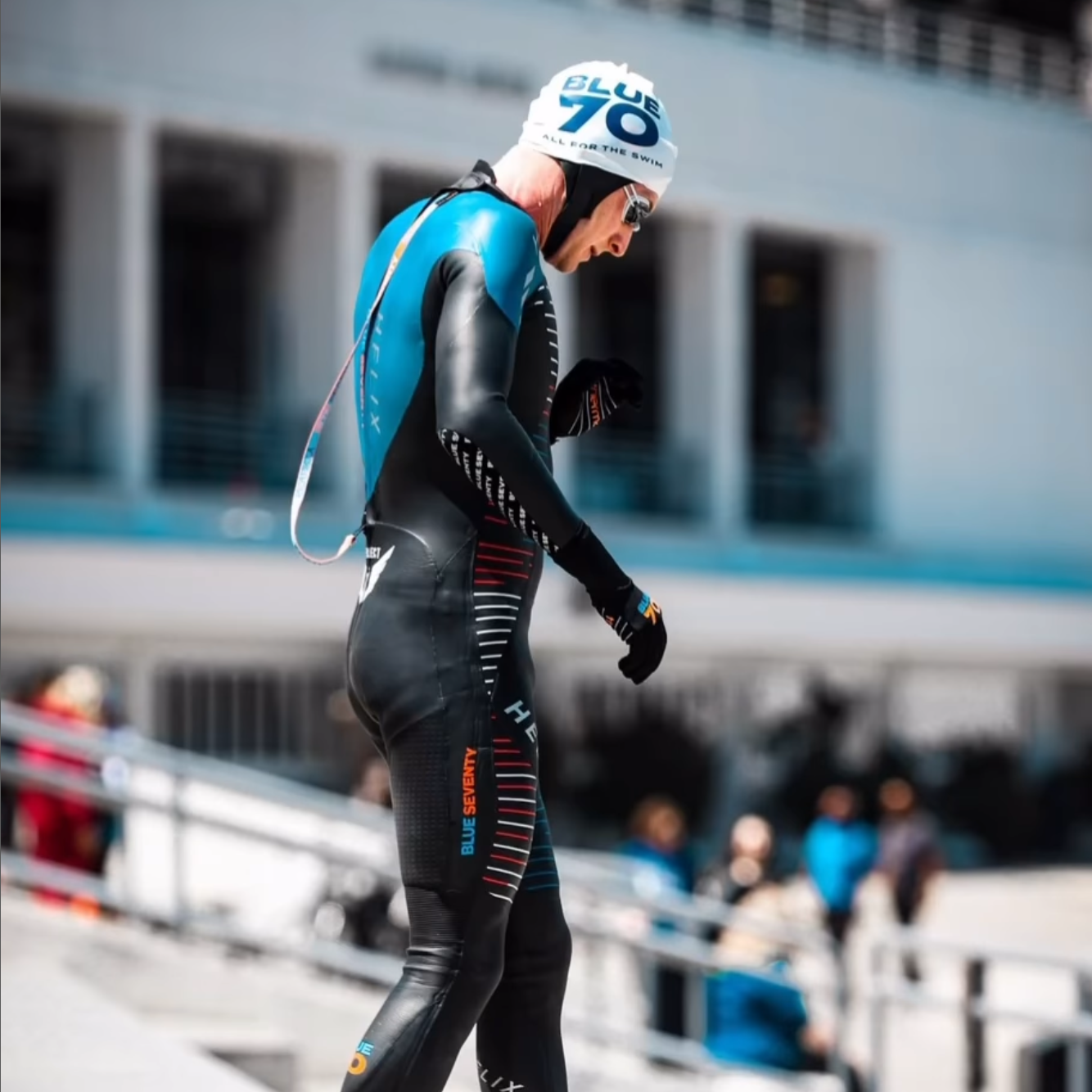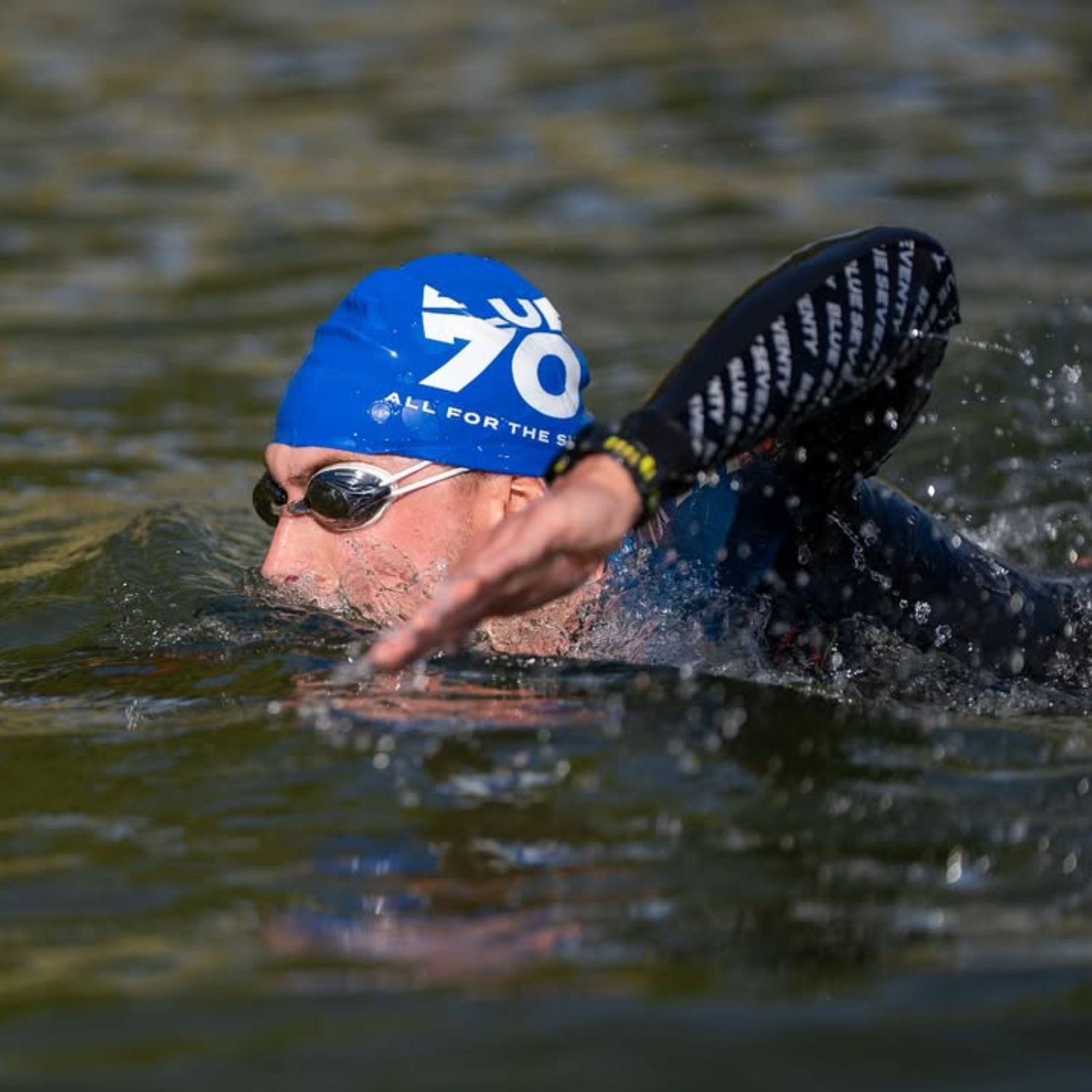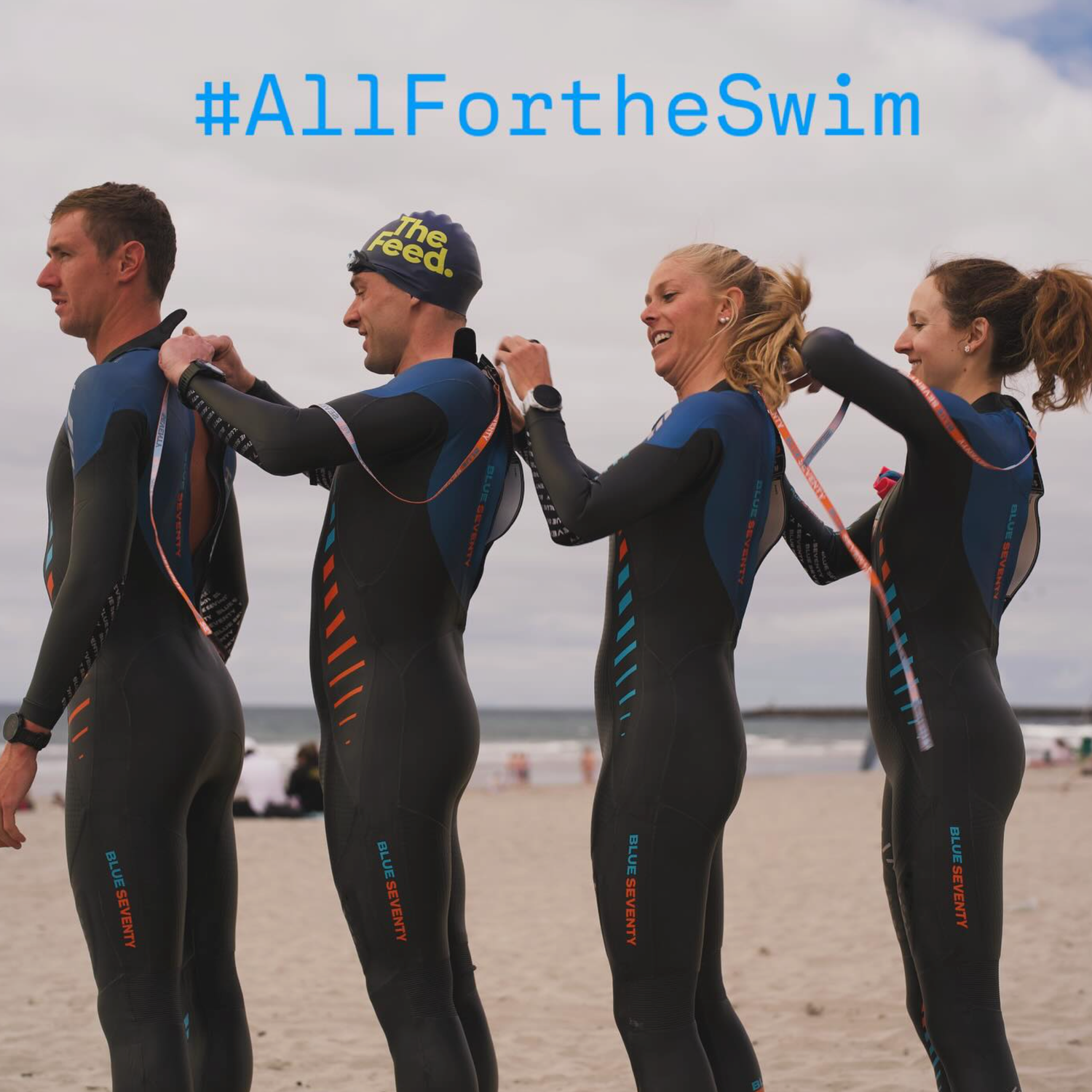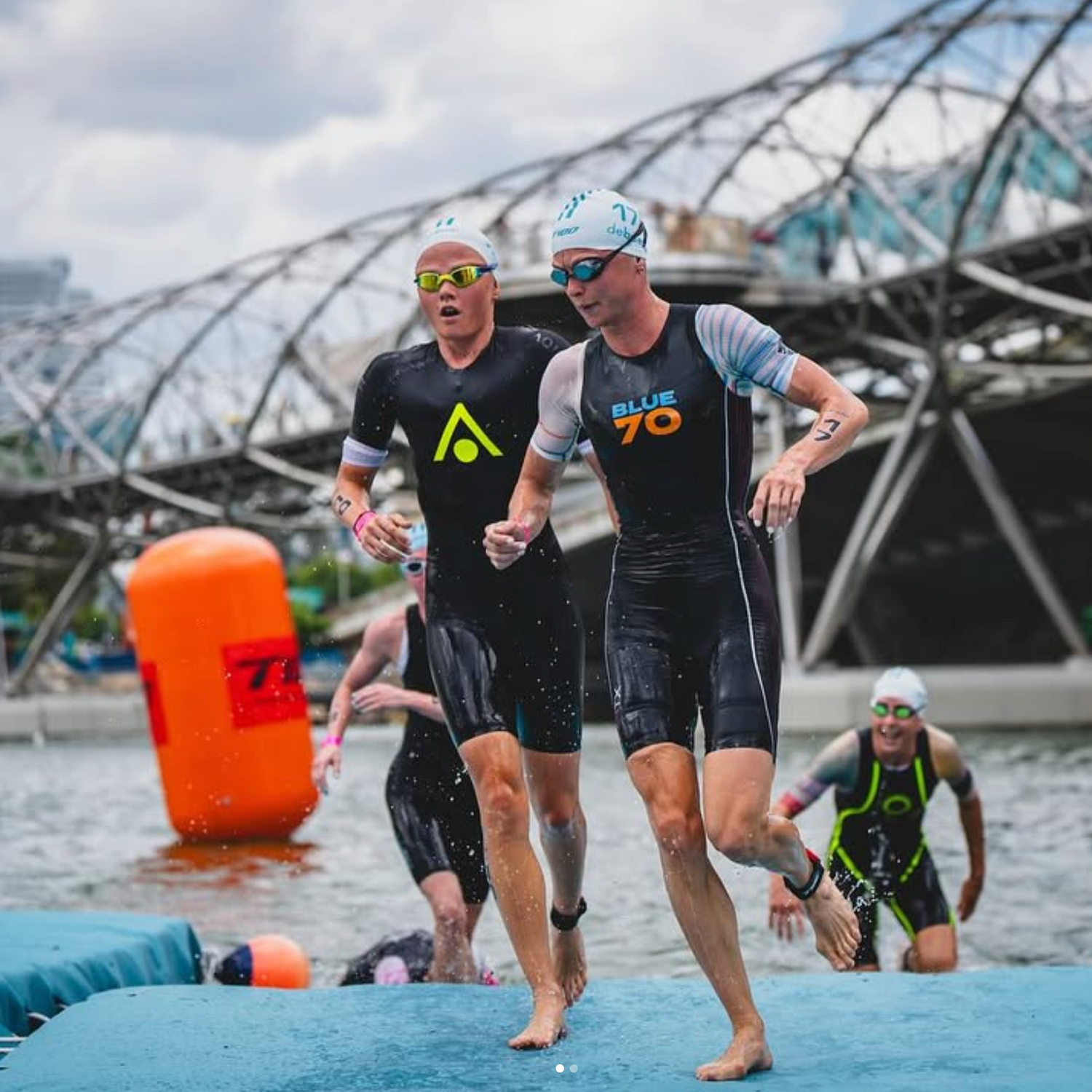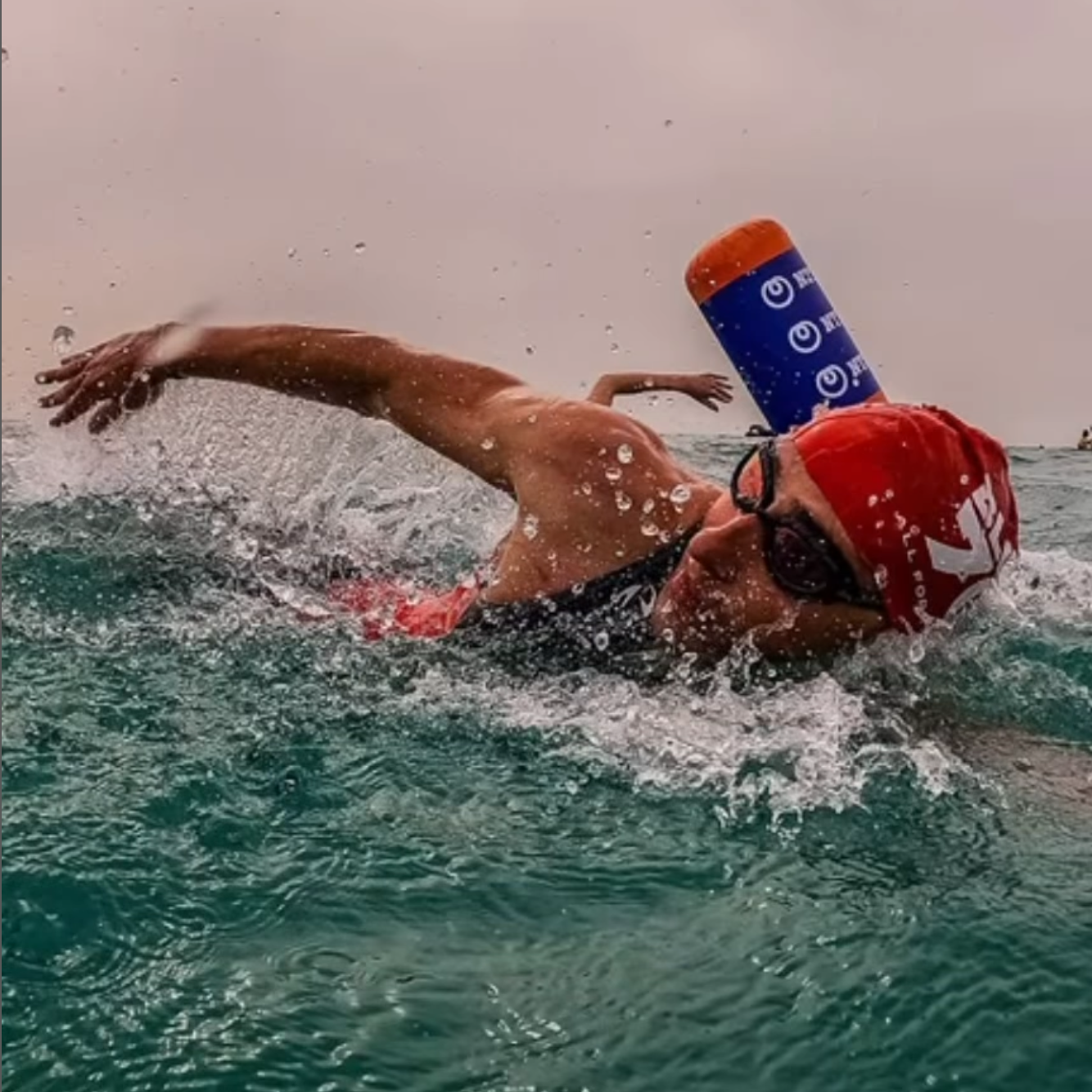While cold water isn’t something we should fear, it is something we should respect and prepare for. Like any swim or triathlon, we do the work before hand, preparing yourself for a cold water race is exactly the same.

Below are a few facts I’ve learned over the course of my racing career. All of these helped me not only survive the cold water, but thrive in it when others floundered.
THE WETSUIT
We’ll start off with the gear needed to make cold water swimming more bearable. The wetsuit, no matter the make, should fit well. Not too loose! A loose fit will cause ‘flushing’, basically allowing the cold water to flow through the suit bringing your core temperature down with every minute that passes. But also consider having a wetsuit that fits too tightly can cause shortness of breath; this will be amplified by the cold water and is a combo you really want to avoid. The sizing / fit topic is easily solved; talk to your training partners, research multiple brands and try-before-you-buy whenever possible. Try to purchase locally where you can it fitted professionally by your local dealer.
blueseventy's first thermal wetsuit was the Thermal Helix, released in 2015. In 2018 we made upgrades and changes to the overall model, creating a high quality, but more affordable version called the Thermal REACTION. It's the perfect wetsuit for cold water adventures. It fits great, has thick 5mm panels through the torso to keep you buoyant and is super flexible allowing you to swim with your normal stroke. Most importantly the entire suit features a fuzzy orange jersey liner that makes the suit really cozy in the colder waters. Note, triathlon wetsuits aren’t allowed to exceed 5mm in thickness, so you won’t find anything thicker.

NEOPRENE CAP
A neoprene cap, also known as a skull cap, is a rubber cap that you put under you swim cap. This insulates your head a lot better than a silicone or latex swim cap. blueseventy’s is 3mm thick and features the fuzzy orange zirconium lining giving it a real advantage in colder waters. If you can’t wear one the next best thing is to wear two silicone swim caps.
NEOPRENE SOCKS AND GLOVES
Extended exposure to cold water often results in an awful throbbing feeling in those extremities. Having neoprene on your hands and feet allows you to slowly adjust to the temperature and avoid this painful annoyance. I will add that swim gloves are not legal in nearly every race, but they are a fantastic training tool. Neoprene socks are perfectly legal to race in. A few pro’s that I’ve spoken with use socks as pre race warm up accessories and take them off once their bodies have adjusted to the temperature.
EAR PLUGS
Probably one of the most underrated items for cold water swimming. If you have ever felt dizziness, sickness, vertigo or nausea then this may be the answer to all your problems. Doctors such as Jeff Shilt who shared this information with me some years ago, often drip small amounts of cold water onto a patients ear drum to test for things such as vertigo. Most open water swimmers and triathletes will experience some form of discomfort/vertigo when the cold water hits the eardrum. The way to remedy this is to simply use earplugs and stop the water from entering the ear canal.
PRACTICE and PRE-RACE WARM UP
Once you’ve got all the gear, we then need to head to the water! Practicing in the cold water makes perfect sense. Ideally you want to get into the water at least 2-3 times before race day. This lets you and your body know what you’re in for. You don’t need to spend hours in the water, 15 minutes at a time is plenty.
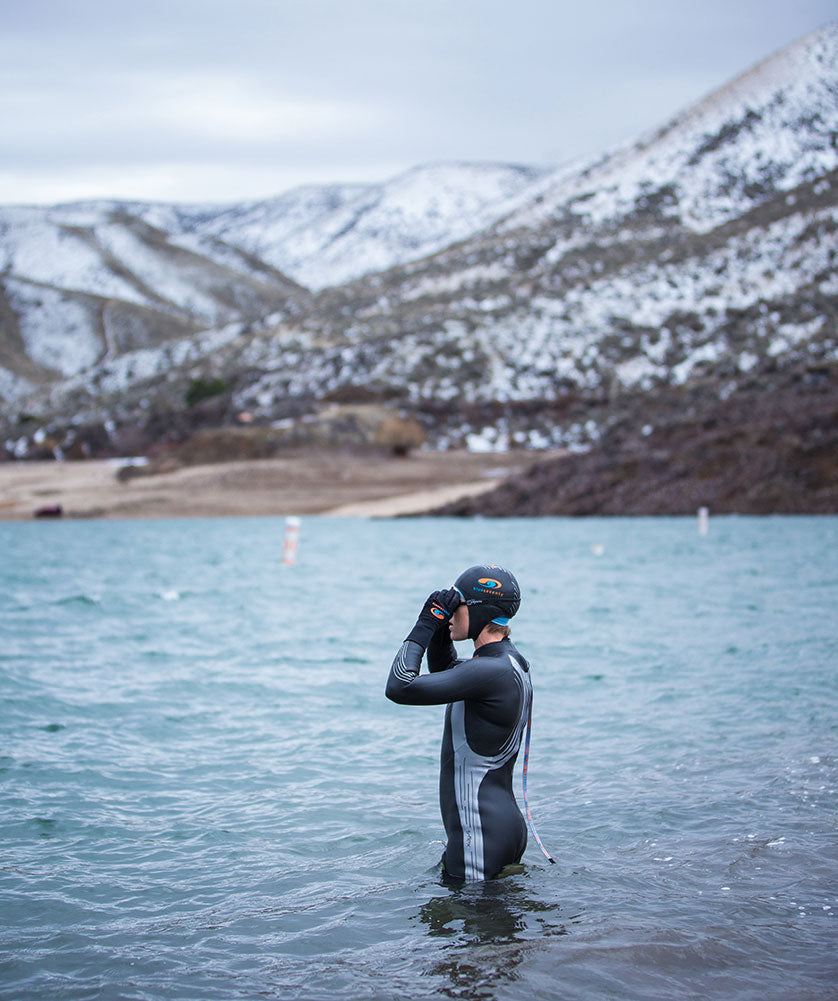
The ‘ice cream headache’ is something we have all experienced. This occurs when your face is submerged in water - remember its important to exhale when swimming - this will reduce the effect and shock of the cold water. Don’t hold your breathe when your face is in the water. This ice cream headache effect causes you to hyperventilate and adjusting to this is an important part of your swim session and race day warm up. Take your time pre-race, wear your neoprene socks, skull cap, ear plugs and have your wetsuit fitted. Do a good warm up, make sure you get your face and body adjusted to the water temperature and you’ll have a great swim.
Good luck and happy swimming!
SHOP ALL THERMAL PRODUCTS
Guy Crawford wrote this article for us. Guy is a long-time blueseventy employee, product tester and professional triathlete originally from Auckland. He now splits his time between Perth in Western Australia and Boise, Idaho when he's not on the road competing in long-distance triathlons.


